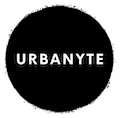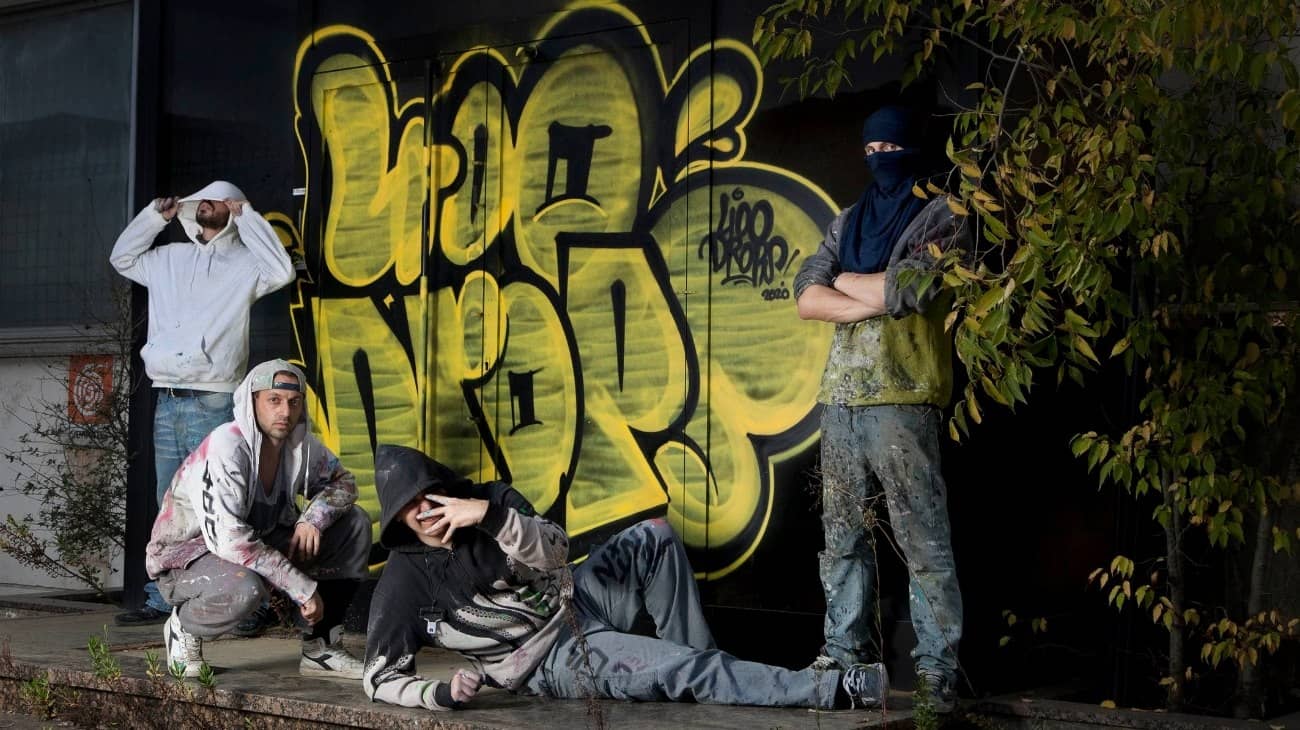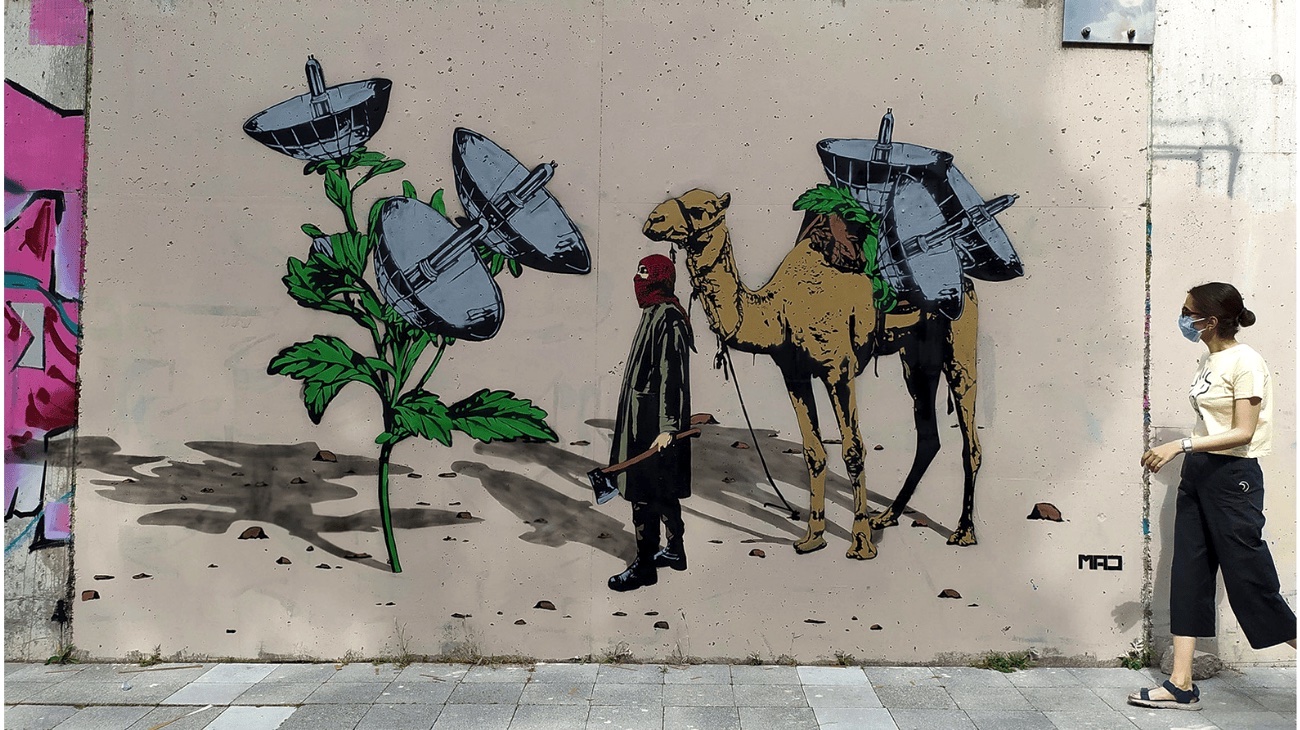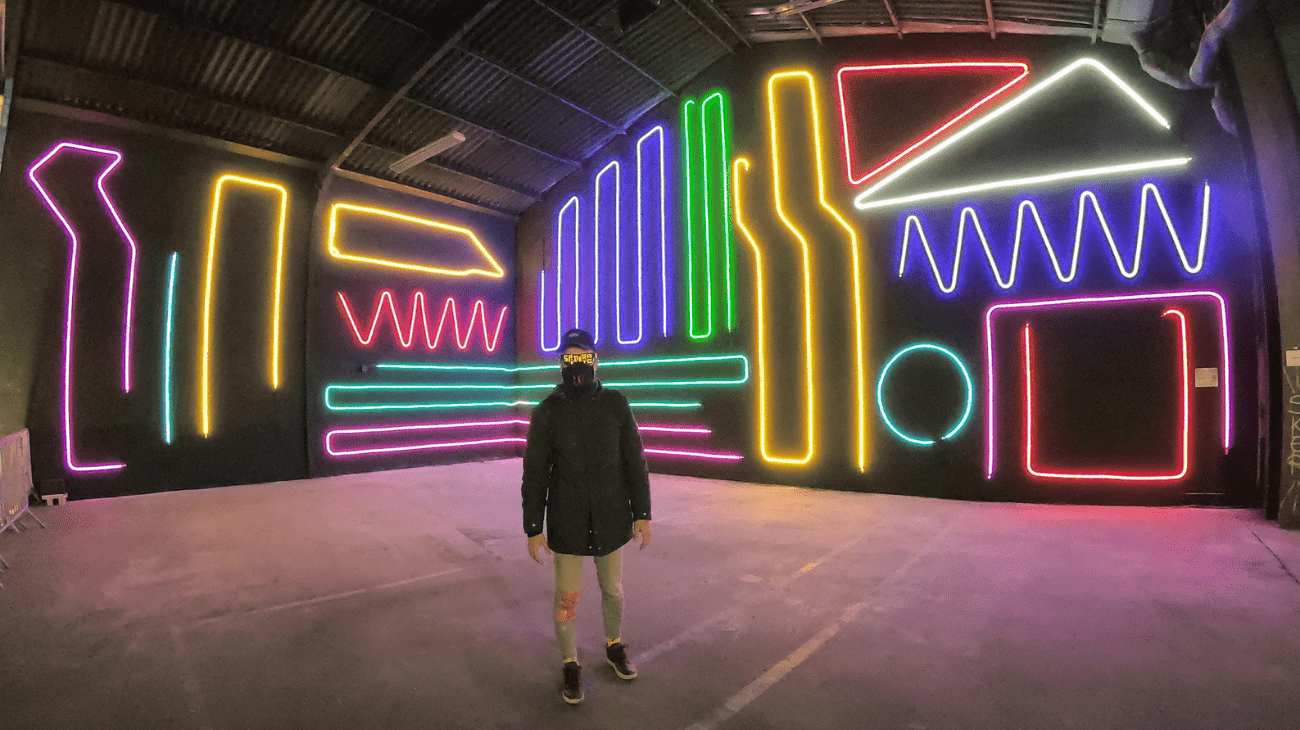
SPIDERTAG
Interview with Spanish neon street artist SPIDERTAG:
Composition is key for street art and muralism. You work with the space. And then, I use my own language, created from primitive signs and basic geometry from the prehistoric times to create this “futuristic primitivism” that is a joint venture between the neon and the old ways of drawings and human expression.

You have been active on the streets since 2008 under the name Spidertag, reinterpreting geometry, abstraction, minimalism and symbolism in urban and rural spaces worldwide. You started creating outdoor compositions with wool and yarn, but changed your technique to flexible neon cables, creating permanent large-scale murals, which you define as “interactive neon murals” and the “Neonmetry” era. Can you tell us more about how you started, your artistic path and your techniques?
I have always been a curious street artist and tried to experiment with different things. Wool and geometry were the early beginnings. At that time I was also using black lights and phosphorescent paint. By 2011 I started using QR codes in the street – with artistic purpose, not just to promote a website – and a few years later I decided to make a big change to move forward.
I was searching for new materials to create something new within the street art movement. It took me almost two hard years to find something that fit my idea of futurism that I had in mind. So when I discovered the new neon, I knew that this was what I was looking for. So I said that by 2015 my career would undergo a rebirth.
Since that moment, I have been learning and developing my own way. Interactive neon murals (INM#) were my way to define this new thing that I was doing. And with these three words together I think I found a way to create my own concept that perfectly explains my intentions: large-scale murals made with neon that allow you as a viewer to interact, by using your phone with the QR code and downloading an app that allows you to change the colors of the neon and make other features.
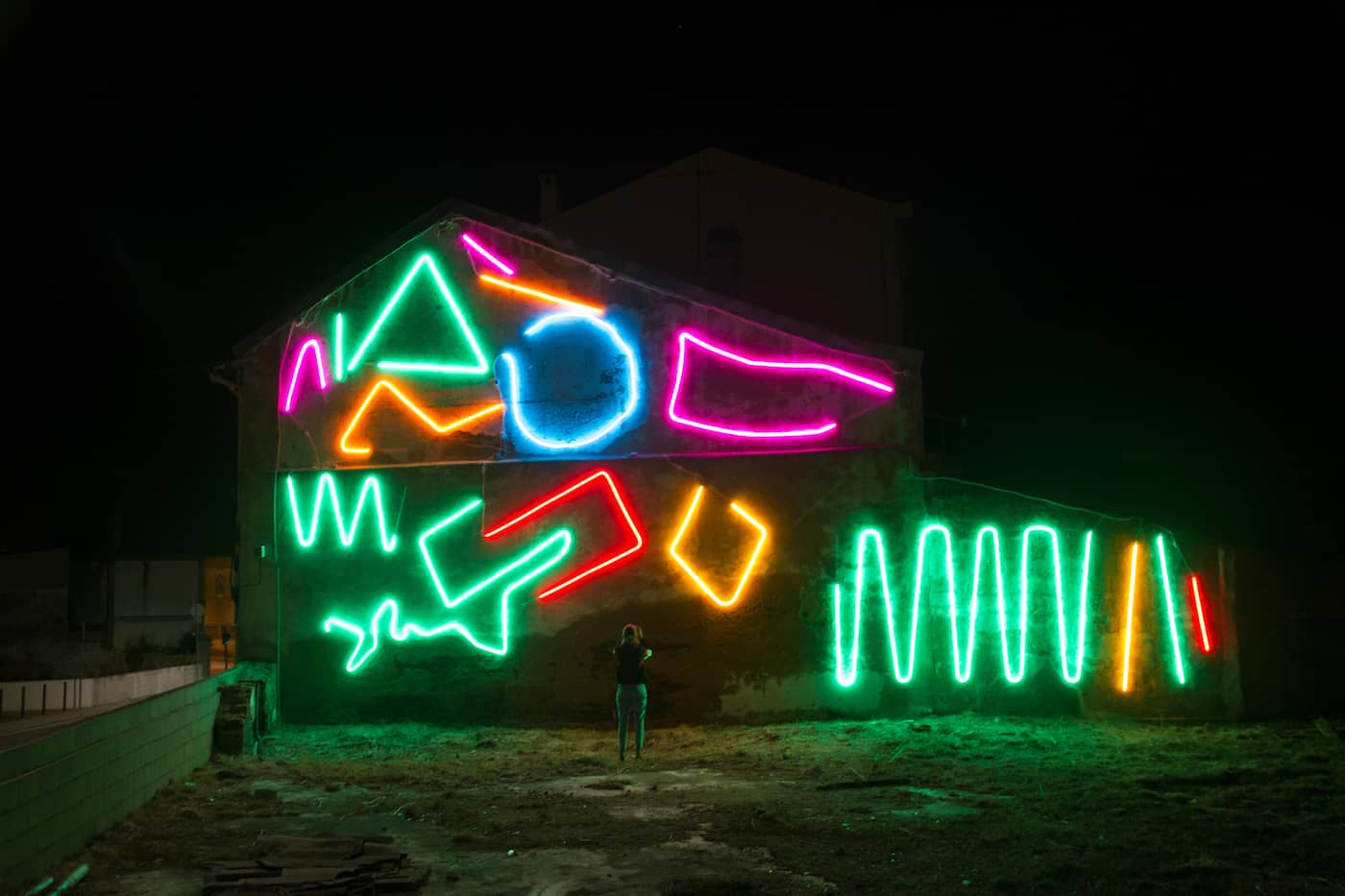
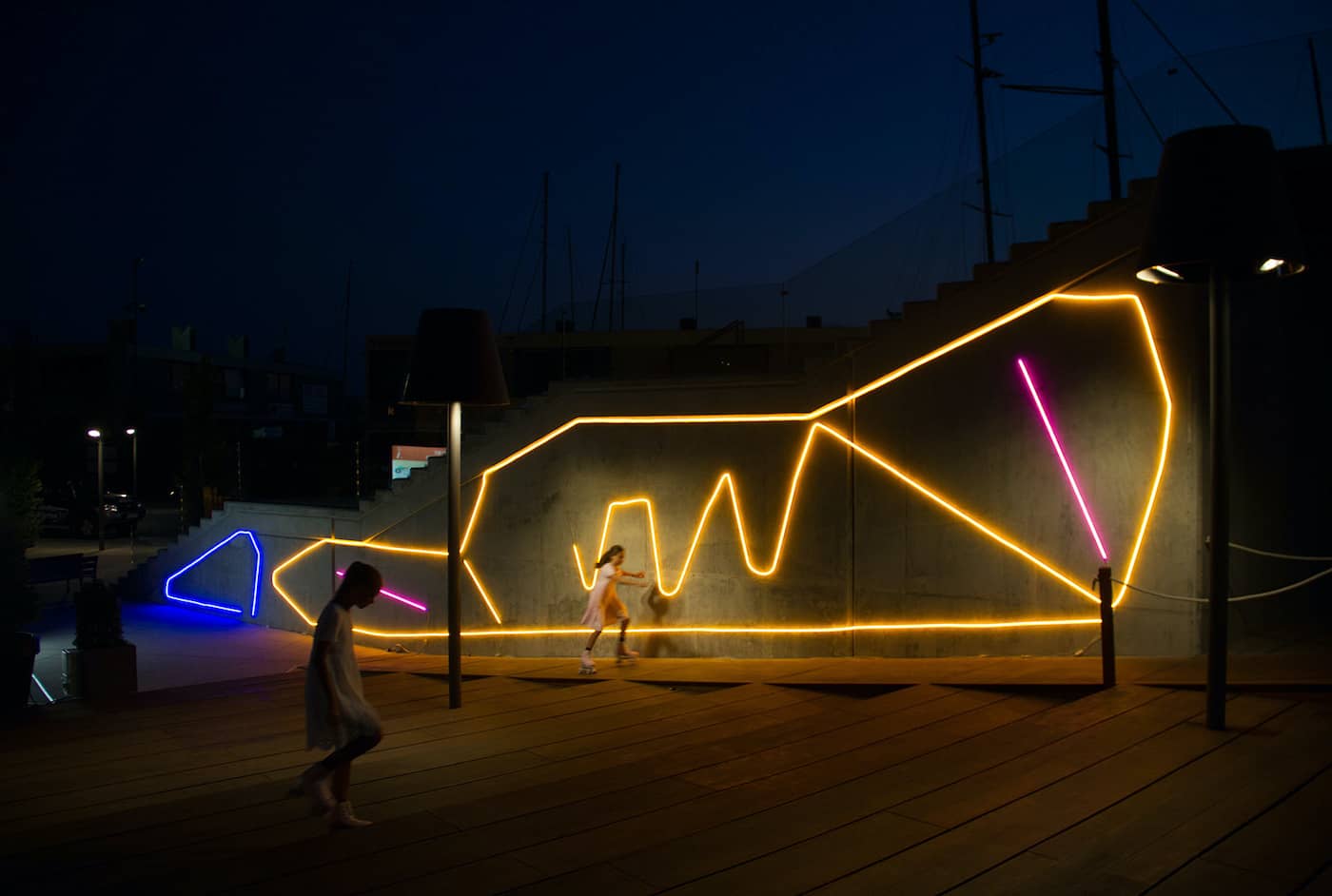
How can one imagine the creation of an interactive neon mural?
Composition is key for street art and muralism. You work with the space.
And then, I use my own language, created from primitive signs and basic geometry from the prehistoric times to create this “futuristic primitivism” that is a joint venture between the neon and the old ways of drawings and human expression.
Do you work alone?
No, normally I need at least one assistant; you normally need four hands at the same time. Depending on the project, its size, the difficulties, and time available for production, I select the team for the job.
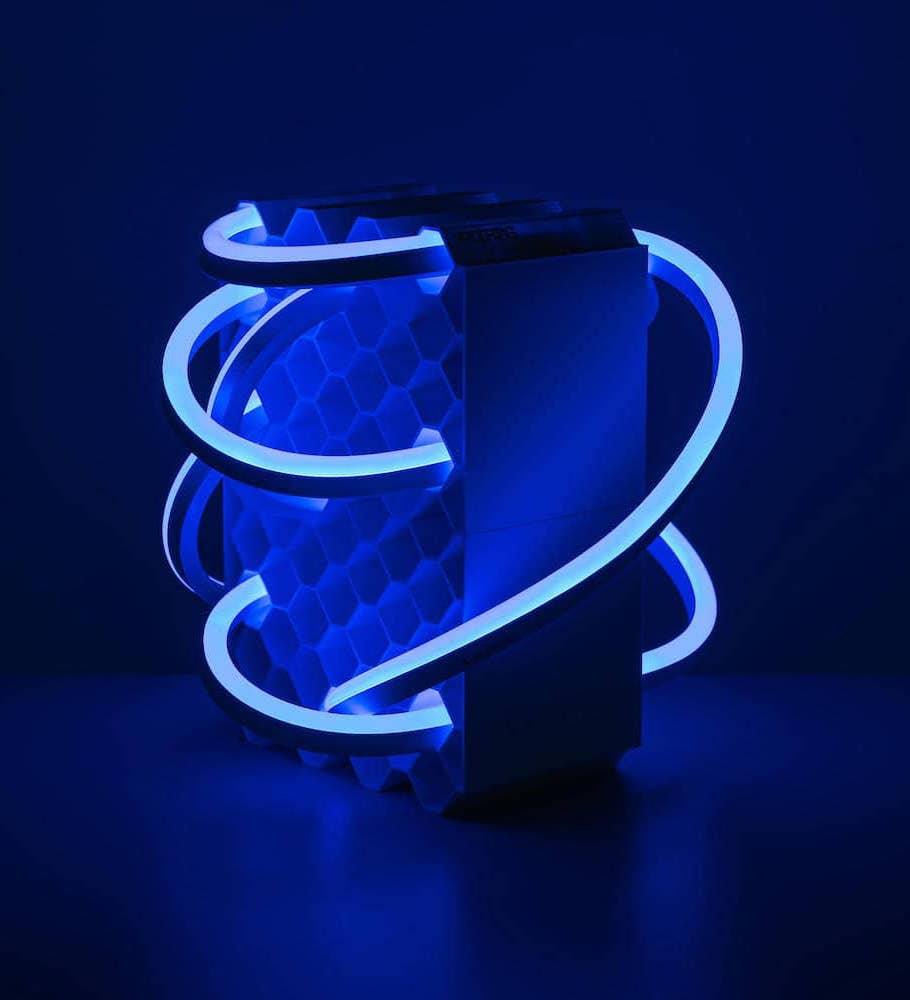
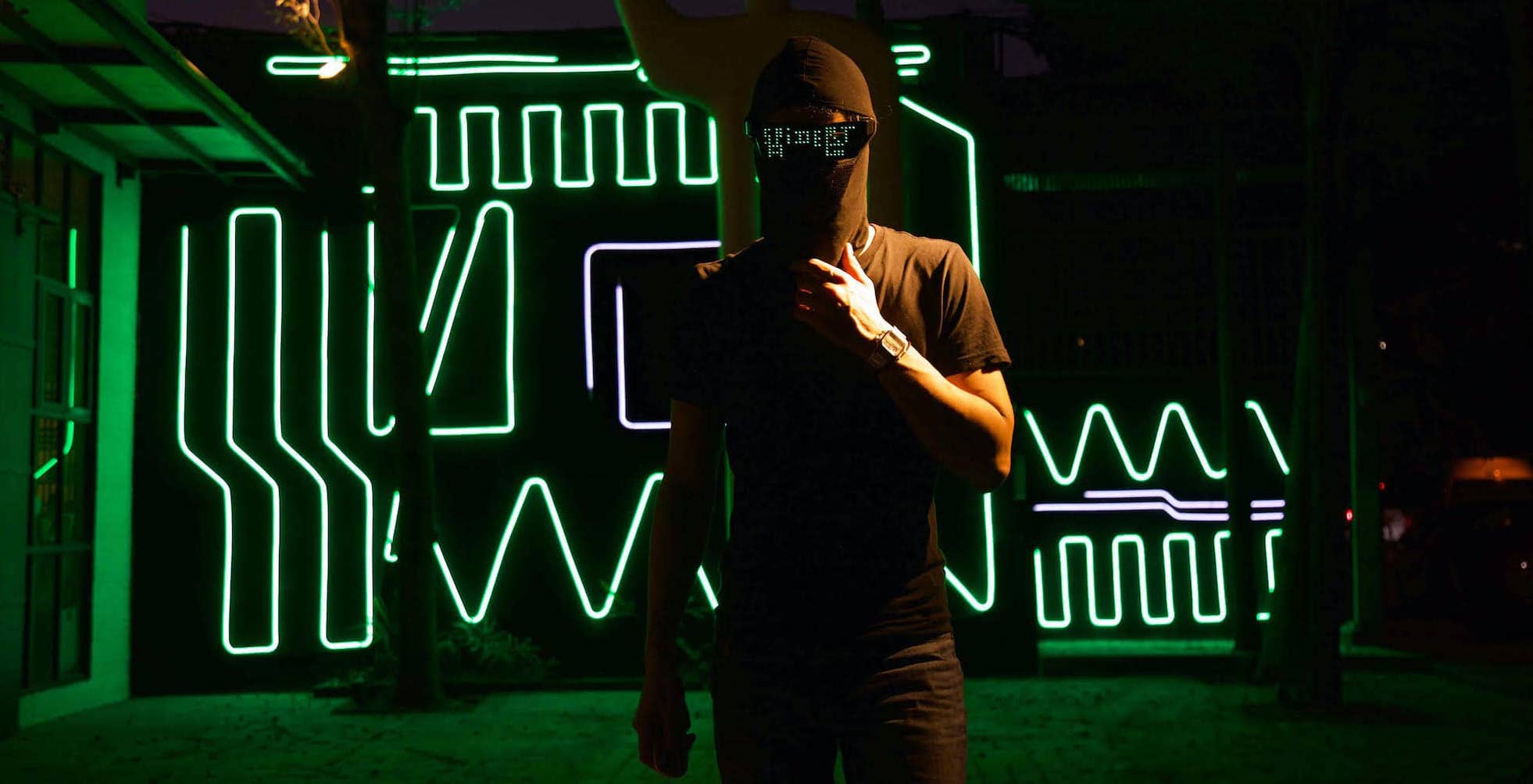
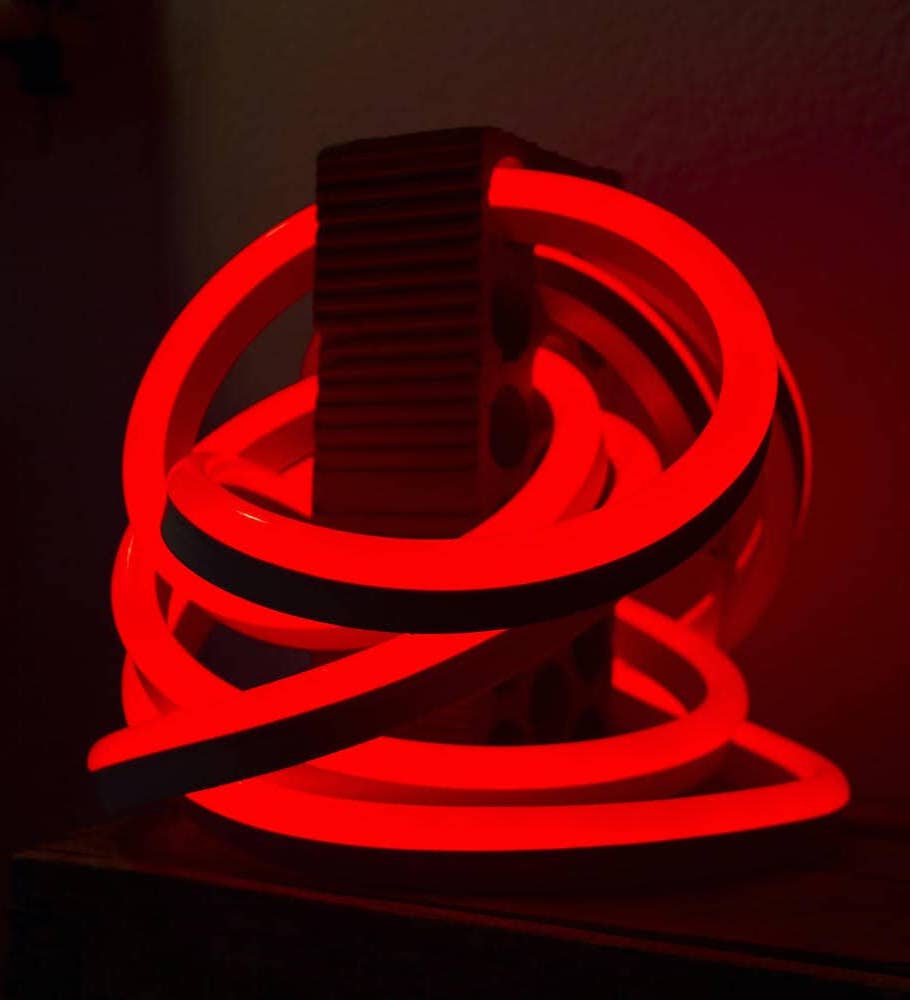
Why did you choose lines, strings, and cables as your medium of expression? What fascinates you about electrified geometry and abstraction?
Neon has fascinated me for a long time. They captivated me and when I found a way to make large-scale murals using a new technology that also allows me to interact, I knew that I had something unique in hand.
What stories do your works tell? What messages do you want to convey and what reactions do you want to evoke in the viewers?
There is no direct message. For me, it’s the experience. It’s the idea of being in a new world, and you find some strange monolith that you may not understand in the beginning, but you get trapped – fascinated by it.
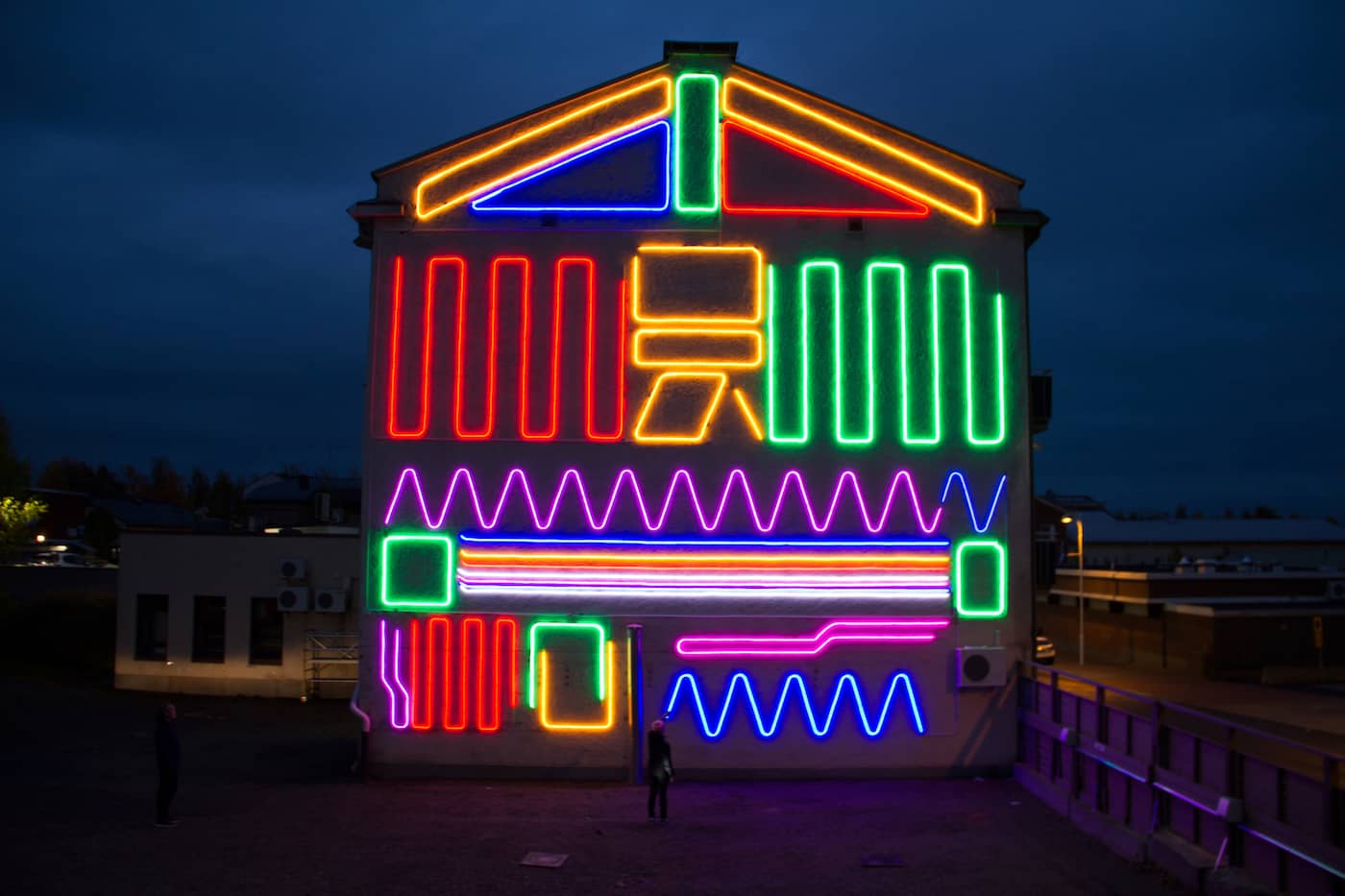
Your influences range from Russian Constructivism to kinetic art, through electronic and alternative music and literature, cinema, video games, graffiti, and modern architecture. Where do you get your stimuli? Are there other (urban) artists who inspire you?
There are a lot of urban artists who inspired me because of their artworks and because of their way of being. I used to (before Covid-19) travel the world a lot and had the opportunity to meet a lot of street artists, graffitists, muralists, and illustrators, and as I love to learn from the cities, I love to learn from the people. This is an immaterial profit that is extremely interesting for me, the same as a book or a film. I try to learn from all the experiences that I have in my mind; many of them also change my points of view or even my way of working, but it’s more invisible because abstraction, symbolism and geometry seem colder in human terms, but they are not always.
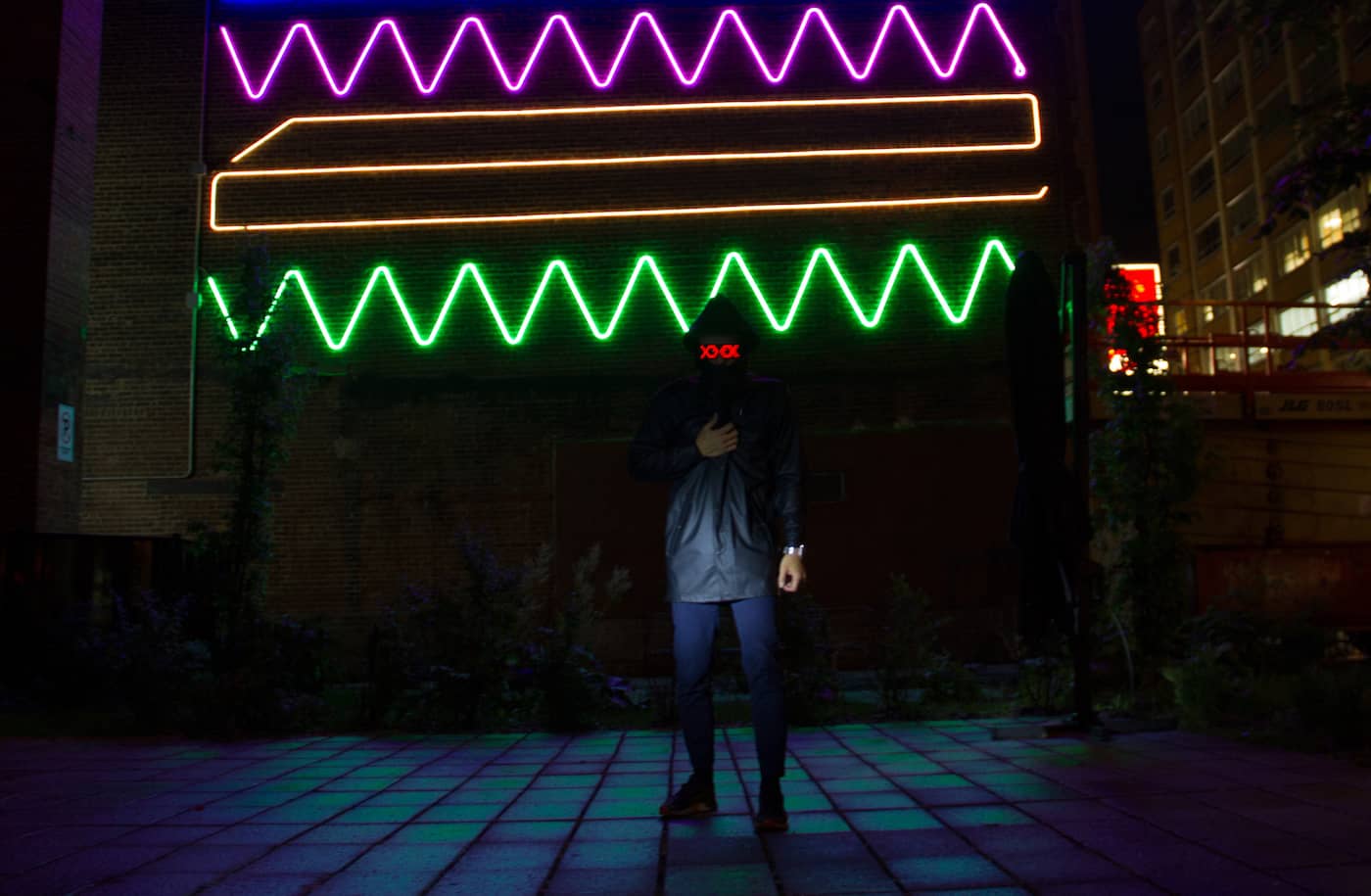
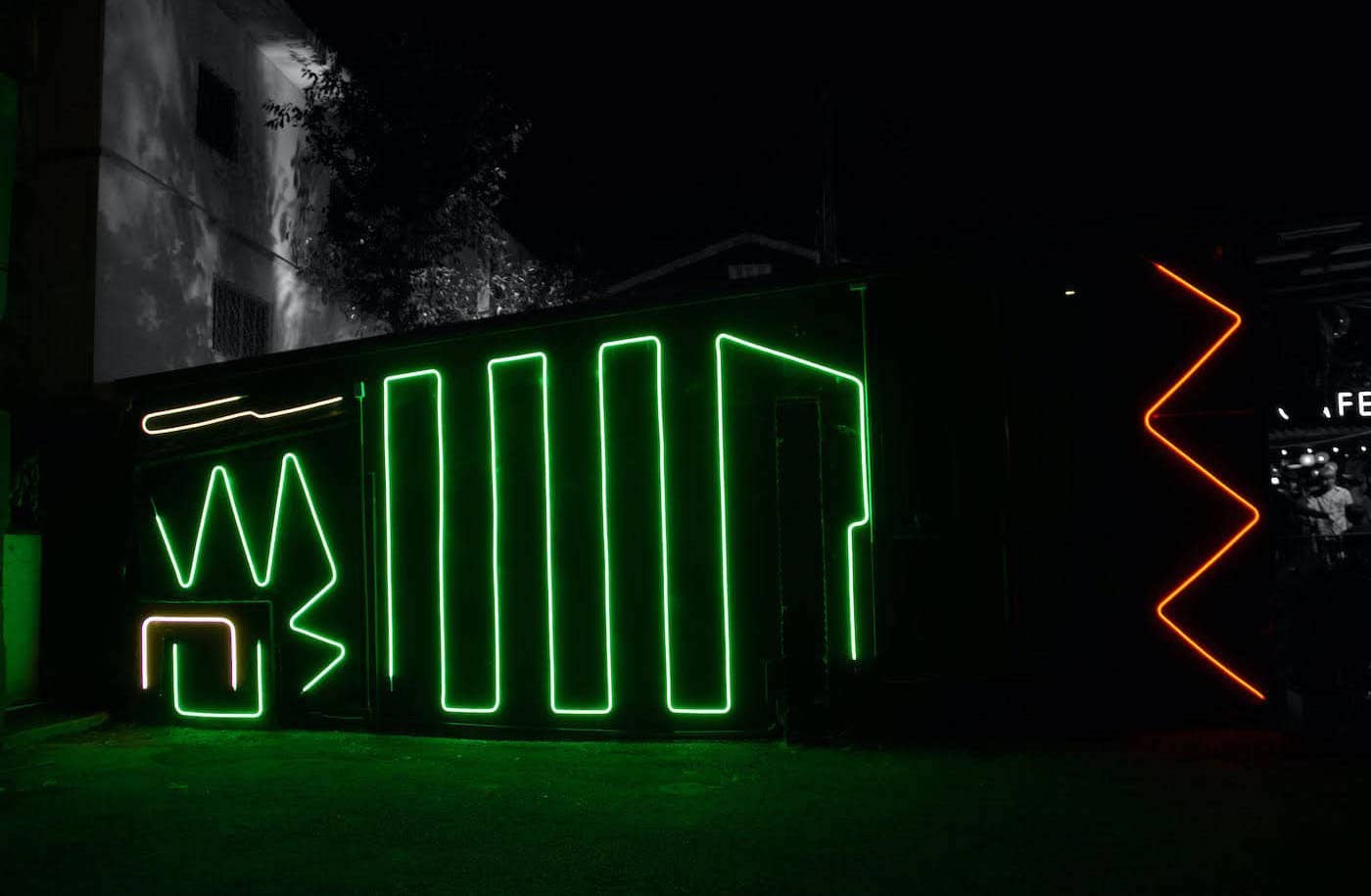
What does urban art mean to you? Doesn’t your idea go against a principle of street art, which is to make public artworks visible to everyone during the day?
Nowadays, street art is everything. The way for street art to survive is to be flexible and to absorb all the techniques and new ideas, not to get old and conservative. And also night is the beginning for illegal actions, the way to be covered by the darkness. I like to walk the line, walk the edge; sometimes this creates confusion for those with a dogmatic mind, but I don’t care much…
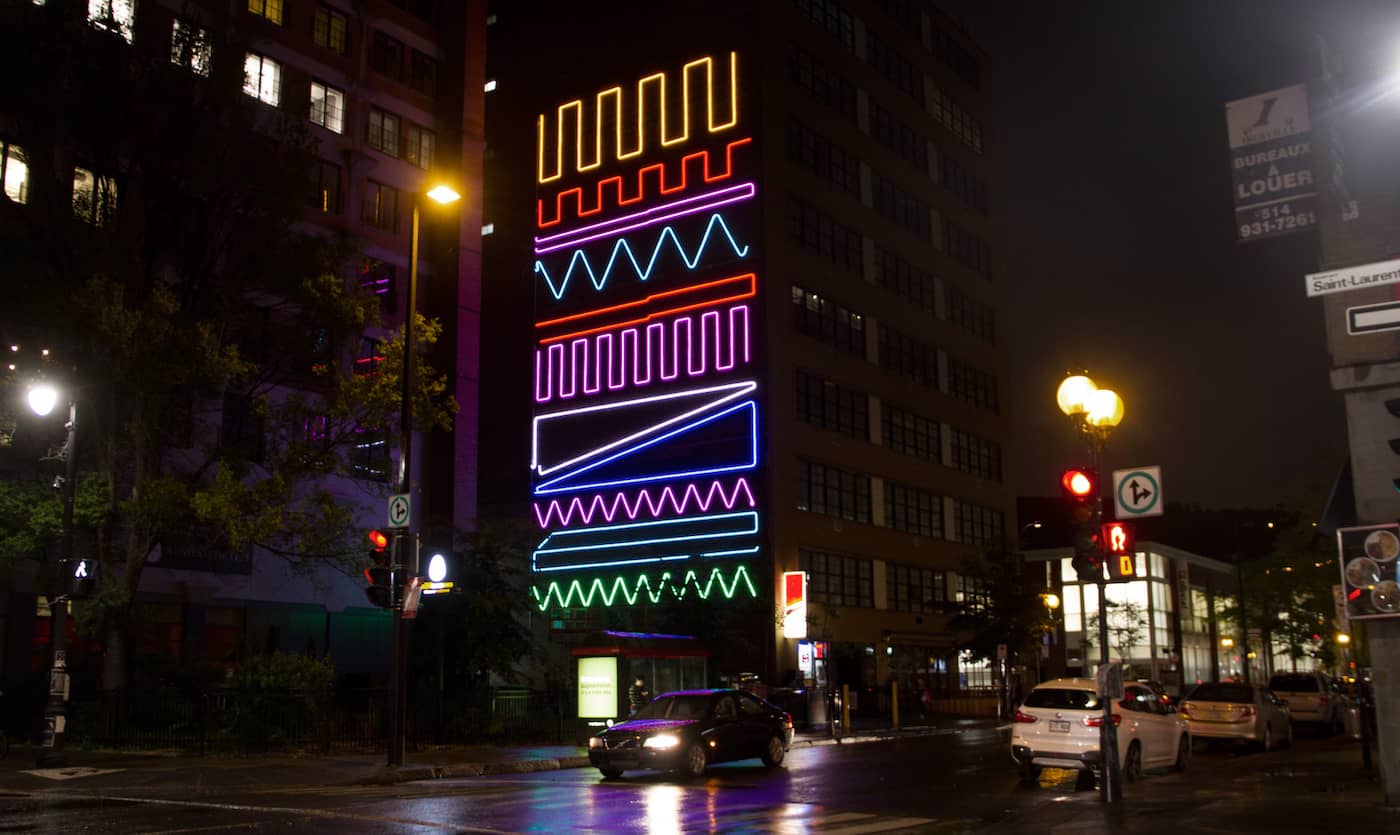
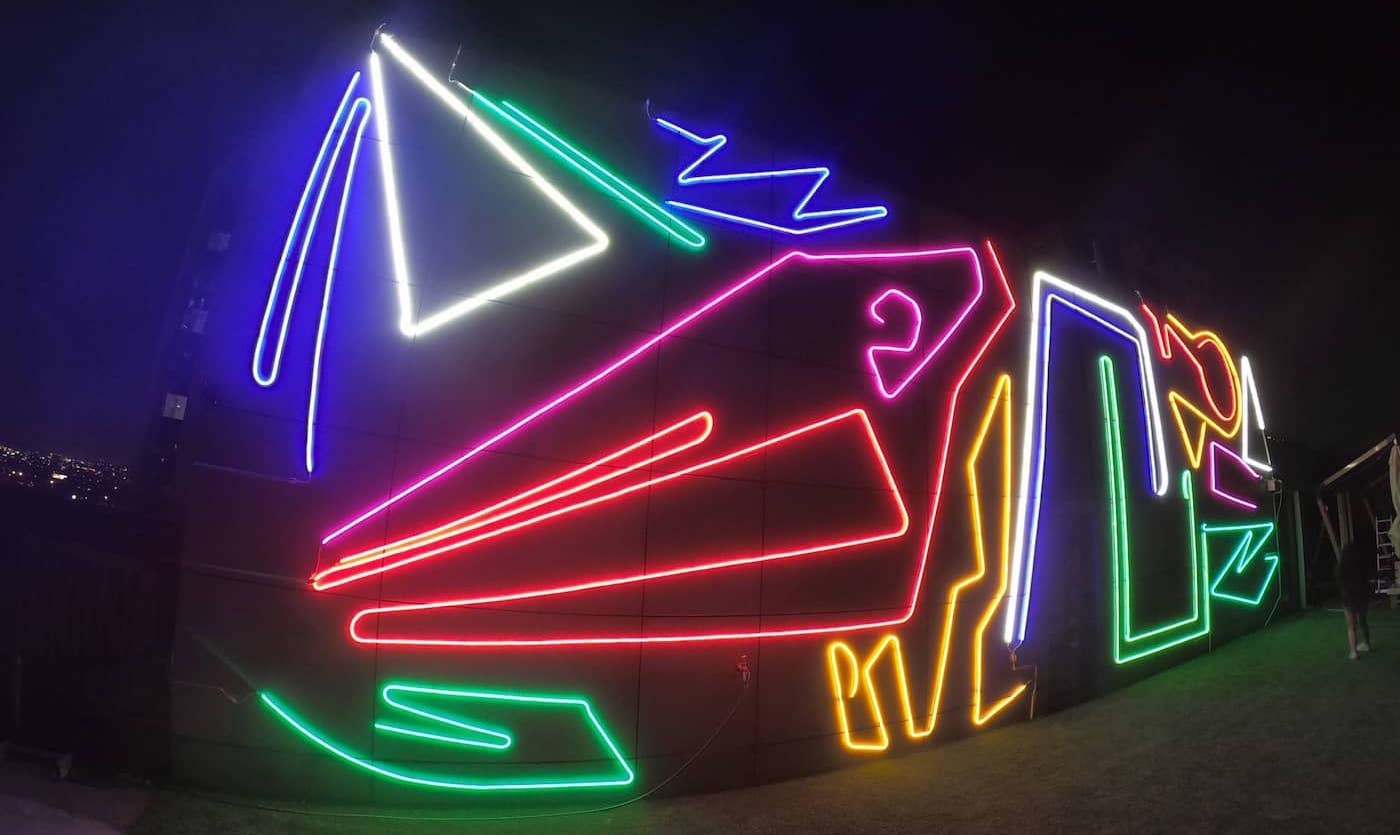
What have been your most challenging and rewarding pieces of work thus far?
My INM# are very physical. The most difficult one in terms of effort was to make a ceiling in Portugal. Working against gravity for days is very hard. Drilling thousands of holes (40 meters by 12 meters) was super exhausting.
The INM#1 in Portugal is also one of my favorites, as well as the INM#4 in Montreal, Canada, and the INM#6 in Finland so far. That was the moment where I felt that I was elevating my energy and vision to the edge of innovation.
Any projects planned, or plans and dreams for the future?
Right now, the future is just starting to appear in my dreams again. Since the beginning of 2020 with the pandemic, I have had a lot of bad personal and professional moments. Really tough times. Art and culture is in general something that the world doesn’t pay much attention to, and in any crisis it gets cut immediately.
In my case, I had more than 24 projects lined up 2020 when I was in Bangkok on December 25, 2019. The future looked amazing and crazy and became obscure and a complete nightmare.
A month ago I took the one-shot vaccine in Timisoara, Romania, much earlier than I would have gotten it in Spain, and for me, this was a symbol that times can change for good. I had a lot of mental issues and personal really sad moments, and it’s hard to survive and to think positively and creatively under these really bad circumstances. I try to imagine that the power and good vibes of my neons can break through the darkness of these times that we are still living in as a human society. I wish to learn from all that and to make use of this experience for a bright future where science, art, equality, and climate responsibility are the bases of the new world. We will have to fight hard for that. Again and always.
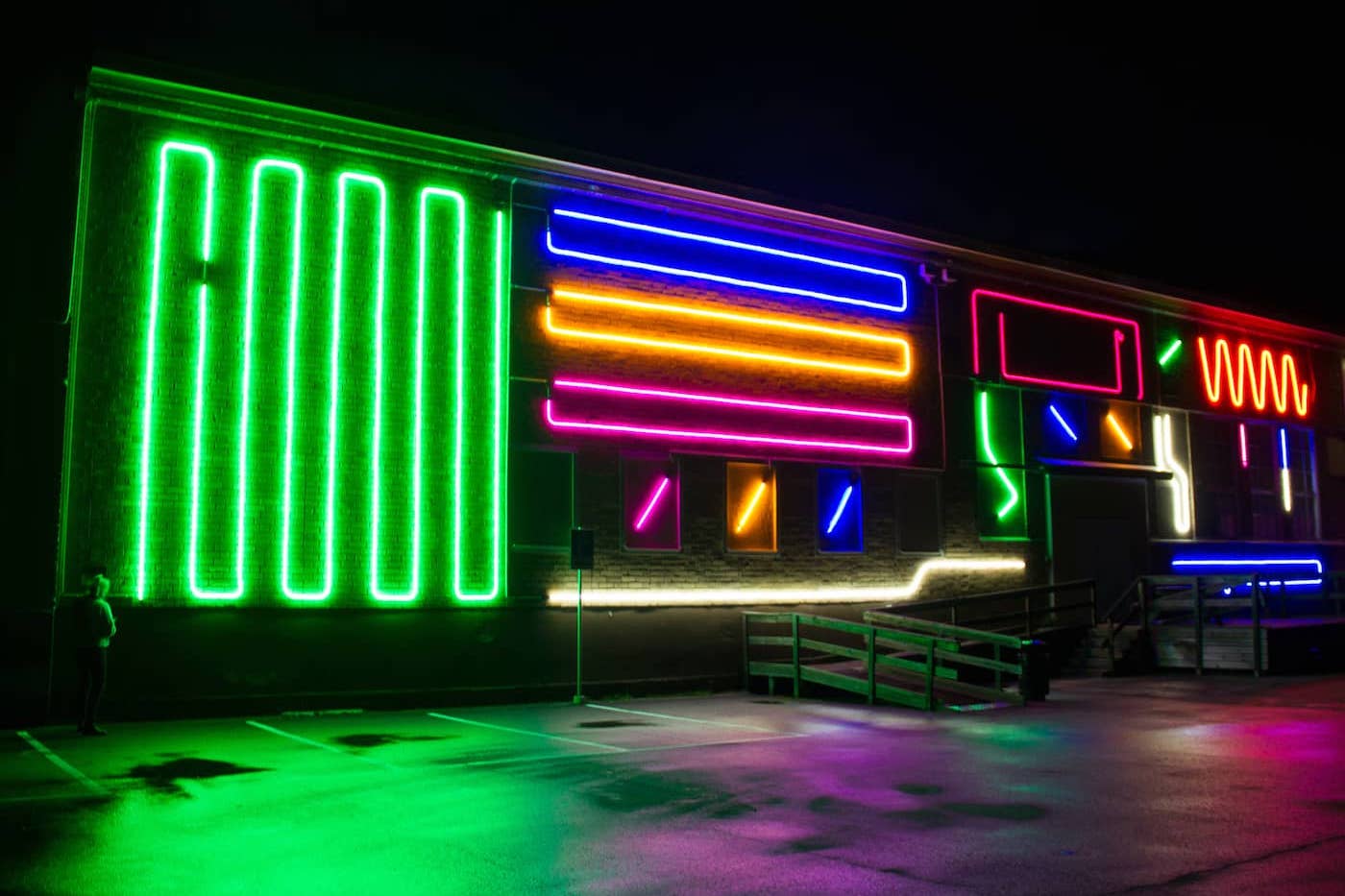
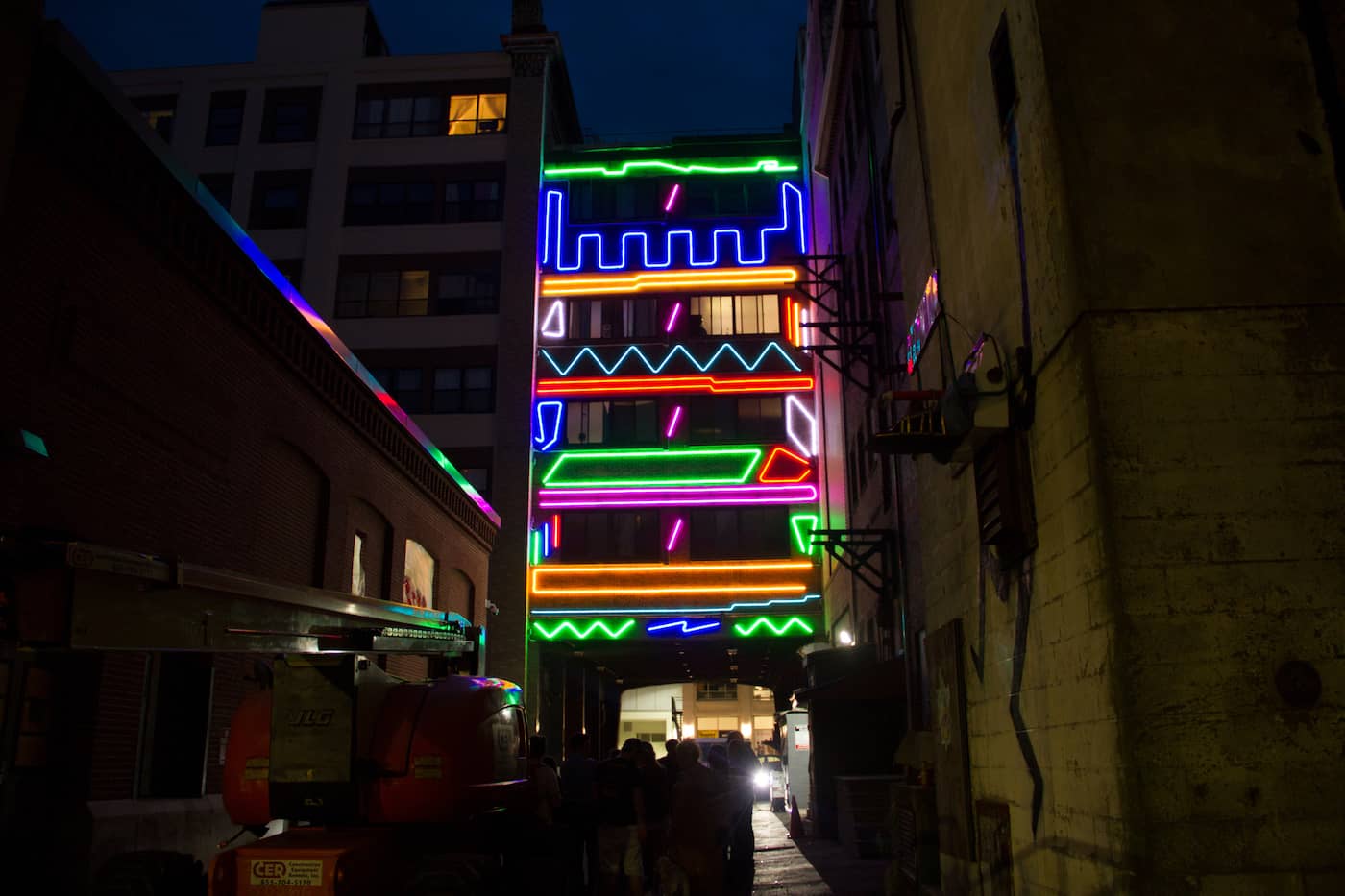
SPIDERTAG
Madrid, Spain
Website spidertag.wordpress.com
Instagram spidertag
Facebook Spidertag
Youtube SPIDERTAG
_______________________________________
Pictures © SPIDERTAG
July 2021
by Laura Vetter


